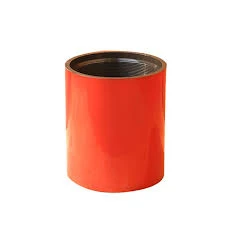- Afrikaans
- Albanian
- Amharic
- Arabic
- Armenian
- Azerbaijani
- Basque
- Belarusian
- Bengali
- Bosnian
- Bulgarian
- Catalan
- Cebuano
- Corsican
- Croatian
- Czech
- Danish
- Dutch
- English
- Esperanto
- Estonian
- Finnish
- French
- Frisian
- Galician
- Georgian
- German
- Greek
- Gujarati
- Haitian Creole
- hausa
- hawaiian
- Hebrew
- Hindi
- Miao
- Hungarian
- Icelandic
- igbo
- Indonesian
- irish
- Italian
- Japanese
- Javanese
- Kannada
- kazakh
- Khmer
- Rwandese
- Korean
- Kurdish
- Kyrgyz
- Lao
- Latin
- Latvian
- Lithuanian
- Luxembourgish
- Macedonian
- Malgashi
- Malay
- Malayalam
- Maltese
- Maori
- Marathi
- Mongolian
- Myanmar
- Nepali
- Norwegian
- Norwegian
- Occitan
- Pashto
- Persian
- Polish
- Portuguese
- Punjabi
- Romanian
- Russian
- Samoan
- Scottish Gaelic
- Serbian
- Sesotho
- Shona
- Sindhi
- Sinhala
- Slovak
- Slovenian
- Somali
- Spanish
- Sundanese
- Swahili
- Swedish
- Tagalog
- Tajik
- Tamil
- Tatar
- Telugu
- Thai
- Turkish
- Turkmen
- Ukrainian
- Urdu
- Uighur
- Uzbek
- Vietnamese
- Welsh
- Bantu
- Yiddish
- Yoruba
- Zulu
tubing crossover
Understanding Tubing Crossover A Key Component in Oil and Gas Operations
In the oil and gas industry, various tools and technologies facilitate efficient exploration and extraction. One crucial component that plays a pivotal role in these operations is the tubing crossover. This device acts as a connector between different sections of casing and tubing systems, enabling the seamless transport of fluids to and from the wellbore. Understanding what tubing crossovers are, their functions, types, and applications is essential for anyone involved in petroleum engineering and production.
What is a Tubing Crossover?
A tubing crossover is a specialized connector used in wellbore systems designed to allow fluid flow between sections of tubing or casing. This engineered device helps in managing the production of oil and gas by minimizing pressure loss and maintaining the integrity of the well structure. The primary purpose of a tubing crossover is to facilitate the transition of fluids between different diameters or types of tubing or casing.
Importance in Oil and Gas Operations
The role of the tubing crossover becomes evident when dealing with complex well designs that require varying tubing diameters, pressure ratings, and material types. These connectors enhance operational efficiency by enabling the optimal flow of hydrocarbons, reducing operational risks, and ensuring well integrity is maintained throughout the production process.
Without effective crossovers, production could be hampered due to inefficient fluid movement, leading to increased operational costs and potential downtime. Therefore, these connectors are vital for ensuring a steady and profitable production rate from wells.
Types of Tubing Crossovers
Tubing crossovers come in several configurations tailored to meet specific operational needs. The most commonly used types include
1. Straight Crossovers These connect two sections of tubing or casing of similar diameters, allowing for straightforward fluid transfer without significant pressure loss.
tubing crossover

2. Reducing Crossovers As the name suggests, these connectors are used when transitioning from a larger diameter tubing to a smaller one. This configuration is essential in optimizing flow patterns and managing pressure differentials within the well.
3. Swivel Crossovers These designs allow for rotational movement while maintaining a fluid-tight connection. They are particularly useful in applications where tubing needs to be rotated, such as when running logging tools or performing interventions.
4. Custom Crossovers In many cases, operations may require unique designs tailored to specific well conditions or configurations. Custom crossovers are designed to meet these specialty requirements while ensuring the operational integrity of the system.
Installation and Maintenance
The installation of tubing crossovers requires careful planning and execution to ensure safety and reliability. Proper alignment, sealing, and torque settings are crucial to avoid leaks and maintain pressure integrity. It is also essential to inspect crossovers regularly to detect any signs of wear or potential failure, as this can significantly impact overall well performance.
Applications Beyond Oil and Gas
While tubing crossovers are predominantly associated with the oil and gas sector, their applications aren't limited to hydrocarbon extraction. Industries such as geothermal energy production, water well drilling, and mining also utilize various crossover technologies to facilitate fluid movement and enhance operational efficacy.
Conclusion
In conclusion, tubing crossovers are integral to the successful operation of oil and gas wells. By enabling effective fluid transport between various sections of tubing and casing, these devices contribute significantly to operational efficiency and safety. With advancements in engineering technology, the design and manufacturing of tubing crossovers continue to evolve, allowing for improved performance in increasingly complex and challenging environments. As the energy sector faces new challenges, understanding and leveraging the capabilities of tubing crossovers will remain essential for maximizing recovery and ensuring sustainable energy production.
-
Tubing Pup Joints: Essential Components for Oil and Gas OperationsNewsJul.10,2025
-
Pup Joints: Essential Components for Reliable Drilling OperationsNewsJul.10,2025
-
Pipe Couplings: Connecting Your World EfficientlyNewsJul.10,2025
-
Mastering Oilfield Operations with Quality Tubing and CasingNewsJul.10,2025
-
High-Quality Casing Couplings for Every NeedNewsJul.10,2025
-
Boost Your Drilling Efficiency with Premium Crossover Tools & Seating NipplesNewsJul.10,2025







